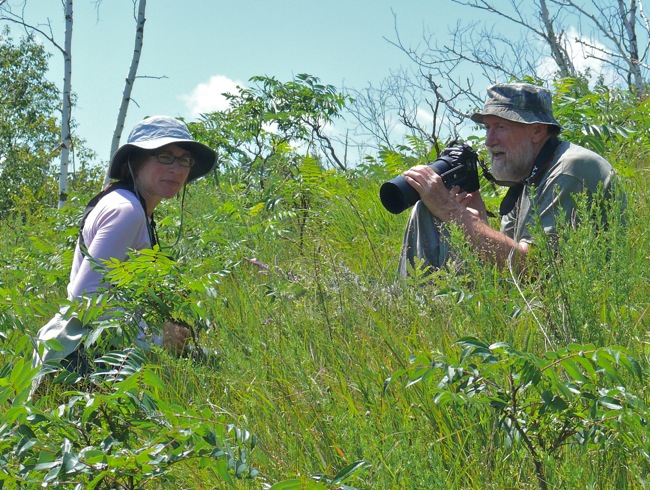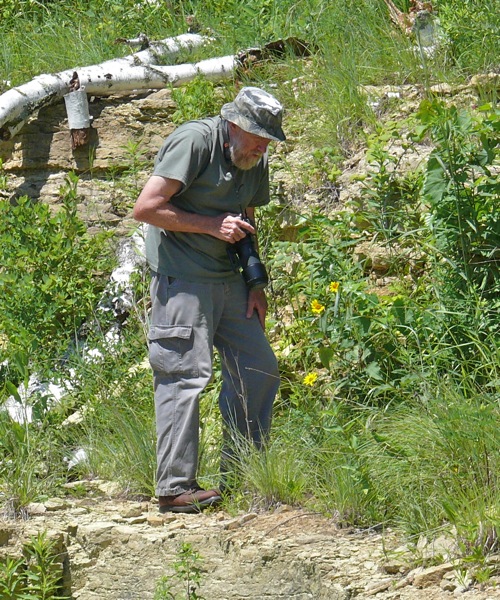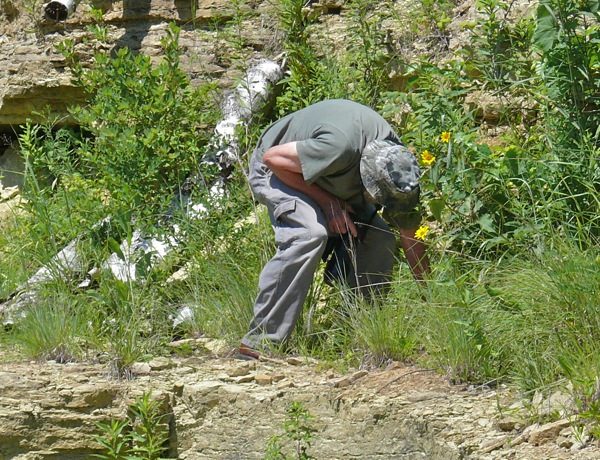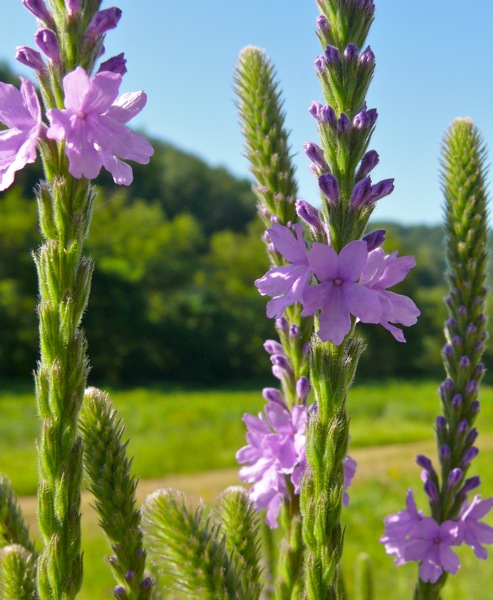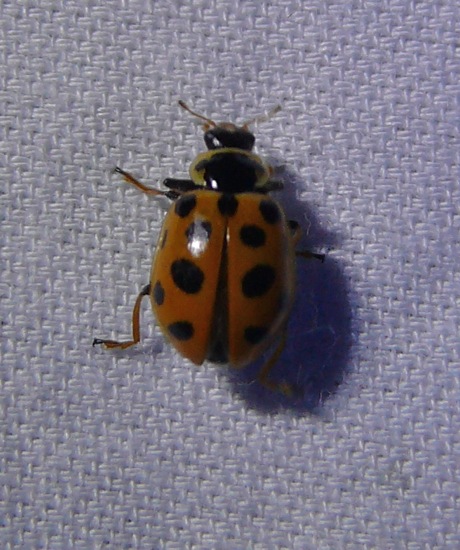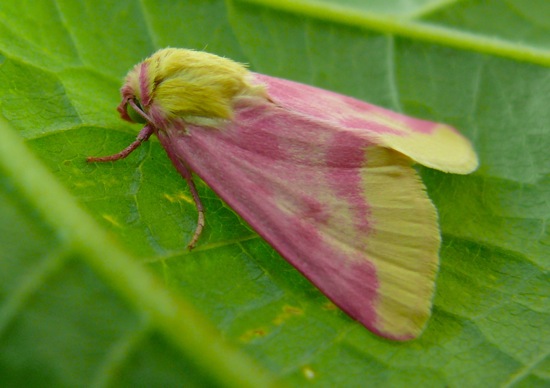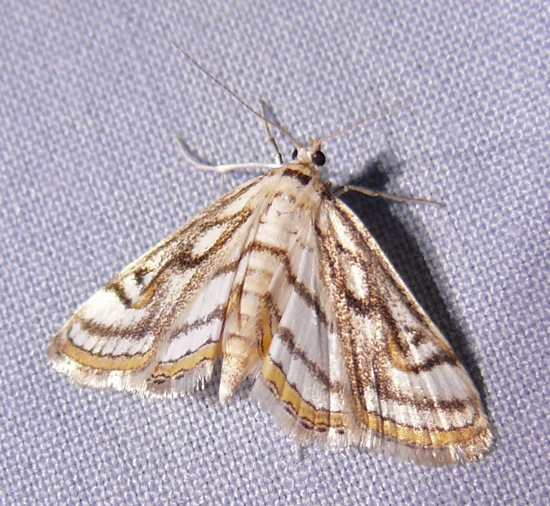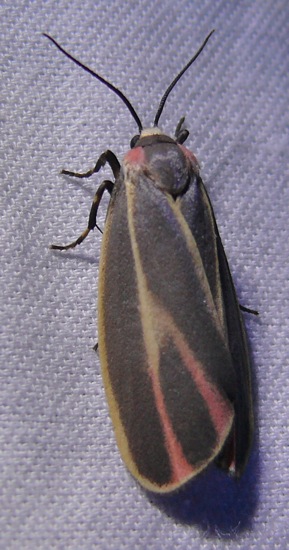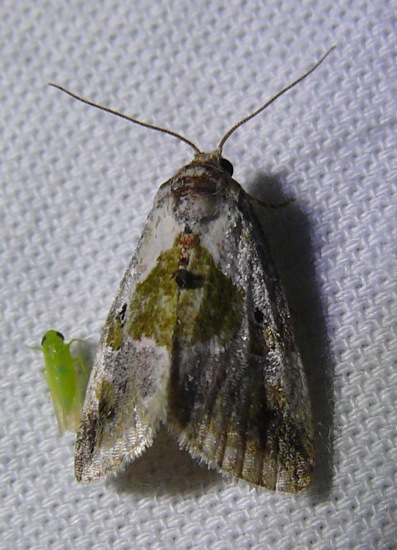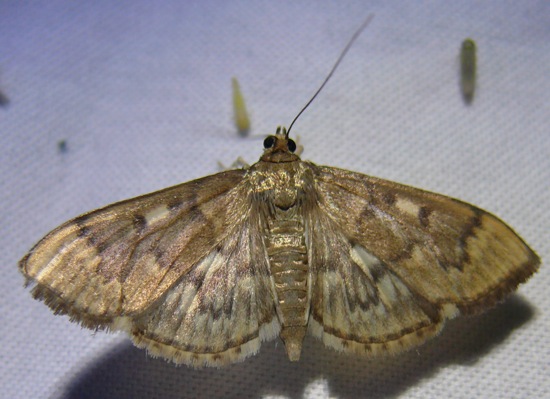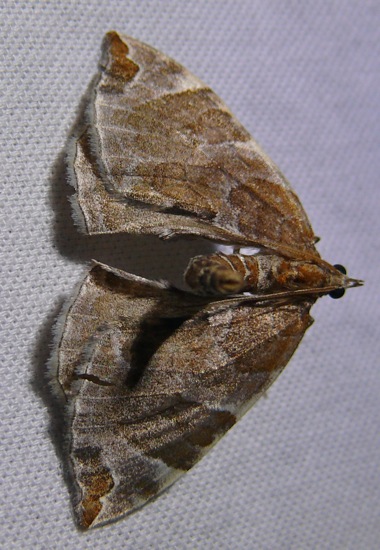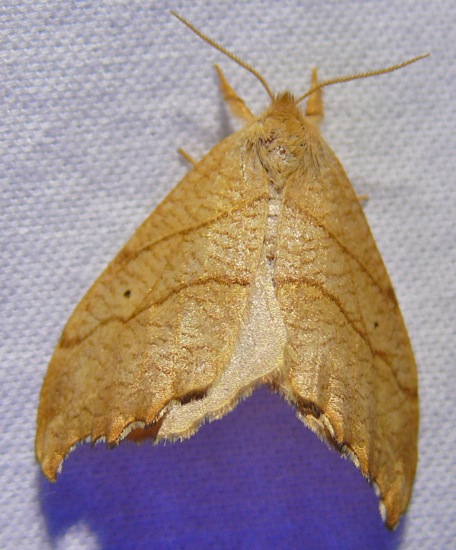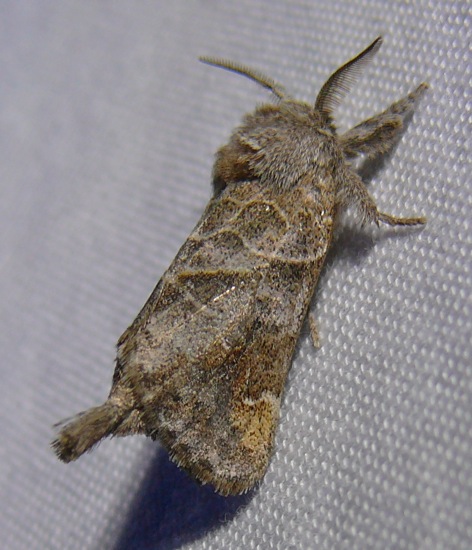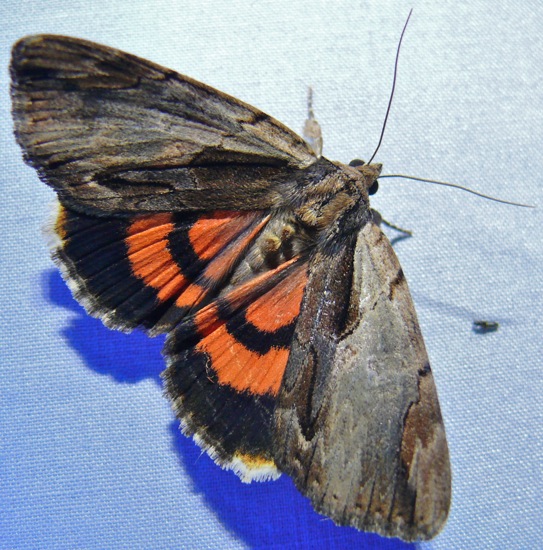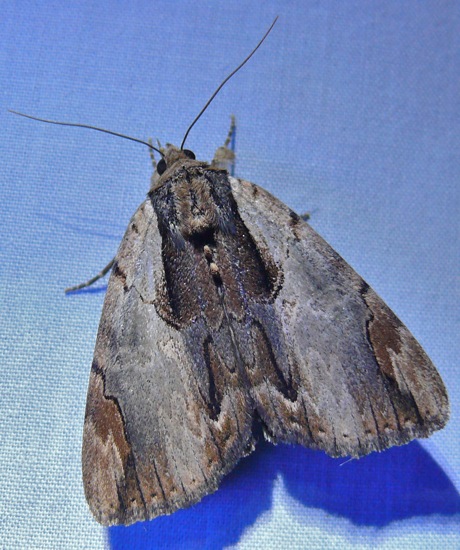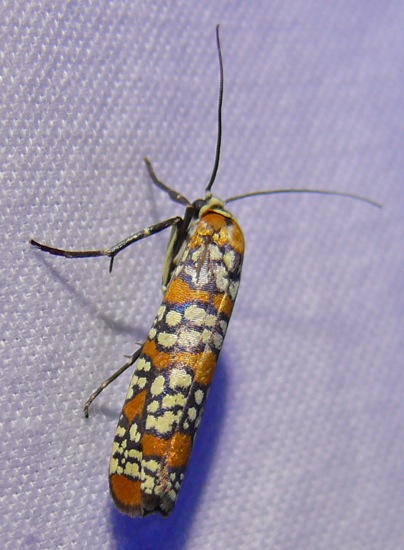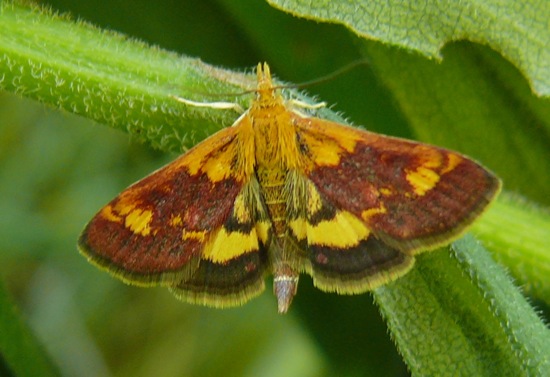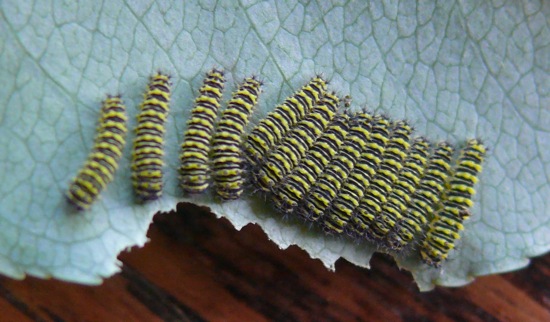We did the Buffalo County Butterfly Count here last week, and – of course – I’ve been seeing more moths.
We had good weather for the count. Some past years have been rainy or cool or both, but this year it was comfortably warm and sunny. Mike Reese, Ann Thering and Allen Blake Sheldon came to help count.
Here’s our list. We saw 37 species, 598 individuals. That’s the highest number of individuals we’ve ever had on a count, and one less than the highest number of species.
Here are Ann and Al taking pictures of a hairstreak.
Then they realized I was taking a picture of them taking pictures.
Dueling photographers – this is Mike Reese.
Al looked for snakes – especially on the rocks behind the house – but didn’t find any.
Hoary Vervain – this just started blooming in our planted prairies.
Thirteen-spotted Lady Beetle – one of the native lady beetles that’s found in Wisconsin.
Now for the moths
This is a Primrose Moth – named because its caterpillars eat the flowers and flower buds of primroses. This one hatched from a cocoon I got from Ian last fall. It overwintered in the refrigerator, and finally hatched last week.
These are some of the moths that came to my lights during the past week.
Chestnut-marked Pondweed Moth – its caterpillars eat Pondweed (Potamogeton sp.). I’m amazed that caterpillars can eat an aquatic plant – I’d like to know how they do it.
Painted Lichen Moth – its caterpillars eat lichens
Black-dotted Maliattha – and a little green guy – I’m not sure what it is.
Serpentine Webworm Moth
Dimorphic Eulithis
Two-lined Hooktip
I think this is in the genus Clostera – one of the prominents – but I don’t know the species.
This is one of the Underwings – Ultronia Underwing. All the underwings have drab, brownish upper wings and beautiful bright scarlet back wings. It’s such a treat to see the back wings. Sometimes, if the moth is sitting quietly, you can gently pull the upper wings apart to see that bright scarlet. This one was showing off without any help from me.
This is the way it looked with closed wings – a beautiful wood-grain pattern.
Ailanthus Webworm Moth – the caterpillars of this moth eat Ailanthus leaves – and probably other kinds of leaves too since the nearest Ailanthus in Wisconsin is in the far southeastern counties.
This is a very small day-flying moth called an Orange Mint Moth – wingspan about 1/2 inch. Its caterpillars eat Monarda species.
My Promethea caterpillars hatched a few weeks ago. They spend their first few instars feeding communally – I like the way they line up on the leaves.


